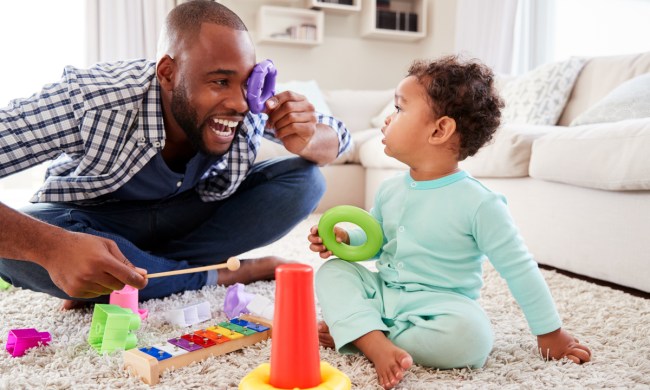Learning how to tell time is a difficult task for some children to master. It requires a lot of time and mental aptitude. Parents struggle with the best way to help their child learn this skill: Should they watch videos, practice counting, look at pictures? What’s the right approach in teaching children about telling time? And, of course, there are two different types of clocks to consider — analog and digital. To help you through the process, we’ve put together this guide with the necessary information to teach your little one how to tell time correctly.
Focus on the numbers first
If your child cannot count to 60, it will be challenging for them to tell the hours. Take time to make sure your child can count to 60. Once that’s been achieved, teach them to count to 60 in 5 second increments (5, 10, 15, 20, 25, 30). Between the ages of 5 and 6, they should be able to discern the hour and half hour markers on an analog clock. Have them practice drawing what time they see on the clock as you move the hands. By the time they reach age 7, they should be able tell you the number of minutes in an hour and the number of hours in a day.
Help them understand the concept of time
Time is abstract, so it isn’t easy to teach and learn. Try to present this concept in a way that your child will understand. Tell them about a typical day and divide it into sections of time — when you get up (morning), what time you eat (afternoon), and when you go to bed (evening). Connecting time with your child’s daily activities will help them learn quickly. For example, ask your child when school is over and then have them show you the right time on a watch. Practice this several times a day using different examples.
Make it fun and easy
The easiest way for kids to learn is when they’re having fun, so try to make a game of telling time. You can start off by giving them a fill-in-the-blank quiz: “We eat breakfast at ___.” “Your bedtime is ____.” “School starts at ____.” Look for story books that incorporate a time theme and read them together at bedtime with your little one. If they love to help you bake, let them set the timer when you put the cookies in the oven. Have them set the alarm on your iPhone for 10 minutes and tell them when it goes off it’s time for their snack.
Make a clock together
A fun activity is actually “making” a clock together. Use a paper plate and have your child draw or use stickers for the numbers around the edge of the plate. Use pipe cleaners or Play-Doh to make the clock hands. To make it a little easier for your child to understand the difference in the hands, write “minute” on the long hand and “hour” on the shorter one. Keep an analog clock nearby for reference. There are many websites with free plans on how to do this at home. Focus on important markers (12, 3, 6, 9). Then ask your child to show you on the clock what time they go to bed, eat lunch, leave for school, etc. Practice this daily and introduce activities that happen on the quarter hour. If they are struggling, you can write the minutes around the clock in numbers smaller than the hours.
Buy your child a clock
Once your child is comfortable with the concepts you’ve taught about time, you might consider placing an analog clock in their room. You can explain that they should stay in bed each morning until the short hand on the clock points to 7 and the long hand points to 12. Purchasing an inexpensive educational poster about time and hanging it in their room is also a useful aid. Point out on the clock where the hands need to be when it’s lunchtime, bedtime, when to brush their teeth, etc. Your child will soon associate numbers with actions, and time will become a more understandable concept in their life.
Use apps
Time Teacher (iOS) uses a number of activities to help your child learn about time. They include matching digital time and analog time, quizzes, puzzles, setting time on a digital clock from an analog clock, the option to have times spoken, a stop clock game to help kids determine minutes, and more. Some other highly rated apps include Jungle Time, Tic Toc Time, Todo Telling Time, and Interactive Telling Time. SplashLearn offers free interactive time games for grades one through three to help your child sharpen their skills.
At the end of the day, each child learns in different ways and at his or her own pace. Strengthen the perception of time during your daily routine, but make it fun and playful – you don’t want your child to end up frustrated and in tears! As your little one gradually gains confidence, introduce more difficult concepts like clocks that use Roman numerals. The most important things are to encourage and practice regularly. Remember, all good things take time.


